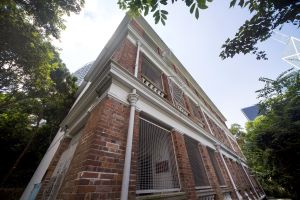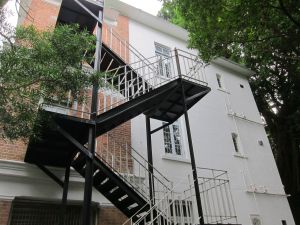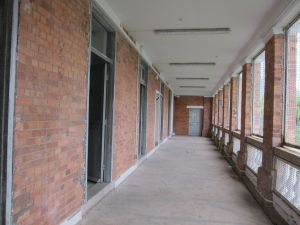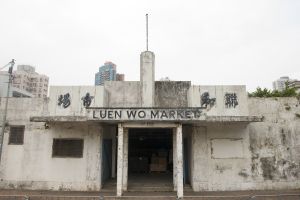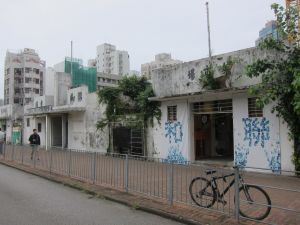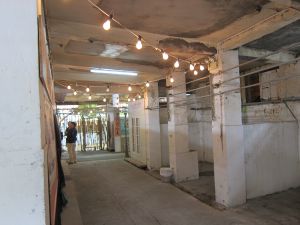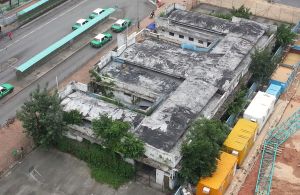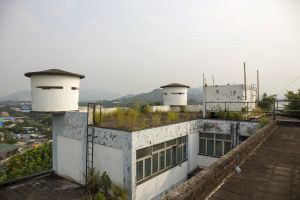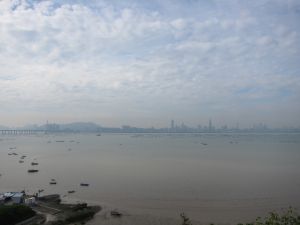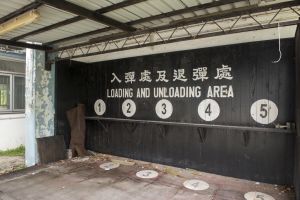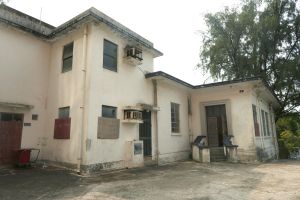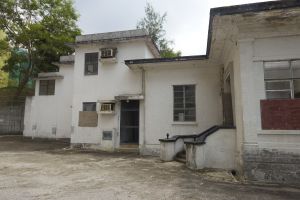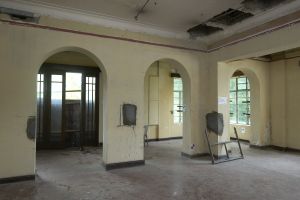Application open for revitalising historic buildings
|
Development and conservation are not mutually exclusive. We have all along been striving to strike a balance between sustainable development and heritage conservation. Hong Kong has many buildings of historic value that need us to conserve, revitalise and put to good use. I would like to take this opportunity to introduce to you the latest batch, i.e. Batch V, of the Revitalising Historic Buildings Through Partnership Scheme (Revitalisation Scheme) announced earlier. The four historic buildings selected are Roberts Block, Old Victoria Barracks in Central; Luen Wo Market in Fanling; the Former Lau Fau Shan Police Station in Yuen Long; and Watervale House, Former Gordon Hard Camp in Tuen Mun. Since each historic building has its own distinctive features and value, interested non-profit-making organisations (NPOs) are welcome to submit revitalisation proposals to give these historic buildings a new lease of life for public enjoyment. The Government is committed to the conservation of historic buildings. Since 2007, we have earmarked a total of $2.4 billion to support and promote the Revitalisation Scheme and strengthen heritage conservation work. The objectives of the scheme are to preserve and put government-owned historic buildings to good use through innovative approaches; to transform them into unique cultural landmarks as well as promote active public participation in our conservation work, support the development of social enterprises and create job opportunities at the district level. The 15 projects selected under the first four batches of the Revitalisation Scheme are currently at different stages of development and implementation, of which eight have commenced operation. They are the Former North Kowloon Magistracy, the Old Tai O Police Station, Lui Seng Chun, Fong Yuen Study Hall, Mei Ho House and the Former Lai Chi Kok Hospital under Batch I; and the Old Tai Po Police Station and the Stone Houses under Batch II. Among the projects in operation, four have received the United Nations Educational, Scientific and Cultural Organisation (UNESCO) Asia-Pacific Awards for Cultural Heritage Conservation. They are the Former North Kowloon Magistracy, which was revitalised into the Hong Kong Campus of the Savannah College of Art and Design; the Old Tai O Police Station, which was revitalised into the Tai O Heritage Hotel; Mei Ho House, which was revitalised into YHA Mei Ho House Youth Hostel; and the Old Tai Po Police Station, which was revitalised into the Green Hub. This shows that our heritage conservation work has won the recognition and commendation from the international community. Among the remaining seven projects, we anticipate that the revitalisation works of three projects will be completed in 2017, while the other four are expected to be completed between 2018 and 2019. Continuation of Revitalisation Scheme Among the buildings under Batch V of the Revitalisation Scheme, Roberts Block, Old Victoria Barracks, is a Grade 1 historic building constructed in the early 1900s. It was originally used as an army married quarters and was later used as a rehabilitation hostel for psychiatric patients from 1986 to 2013. Luen Wo Market, built in 1951, is a Grade 3 historic building. It was the largest built market in the New Territories at that time and sold daily necessities such as vegetables and fish. The market is also widely known to Hong Kong people as the filming location for the movie “Hooked on You”. The Former Lau Fau Shan Police Station is a Grade 3 historic building and was built in 1962. It was an outpost and operational base of the Hong Kong Police Force to keep watch and crack down on illegal immigrants. Watervale House, Former Gordon Hard Camp, built in 1933, is a Grade 2 historic building. It was originally a private residence and was later purchased by the British War Department in 1959 to be used as a British officers’ mess. Regardless of the grading, the aforementioned historic buildings all have their own architectural features, stories and history which are worth preserving and revitalising. We are open-minded about their adaptive re-uses and hope to tap community wisdom in search of diverse and creative uses for them. We will submit funding applications to the Legislative Council for renovation and revitalisation works once suitable proposals have been selected. In addition, we will provide full support for the relevant NPOs for their continual operations, and offer financial support of no more than $5 million for each project where necessary. Open days and workshop for the four historic buildings We will organise open days with guided tours for the four historic buildings under Batch V of the Revitalisation Scheme for interested NPOs from 13 to 16 December. A workshop will also be held on 9 January 2017 for the NPOs to learn more about the application procedures and assessment criteria. The guide to application, application form, resource kits containing the historical background and conservation guidelines of the four buildings, as well as other relevant information can be obtained from the Commissioner for Heritage’s Office (CHO) of the Development Bureau (DEVB) at 19/F, West Wing, Central Government Offices, 2 Tim Mei Avenue, Tamar, Hong Kong, or downloaded at https://www.heritage.gov.hk/. Deadline for application is noon on 23 March 2017. Holistic approach to conservation on a continual basis The Revitalisation Scheme is only part of our conservation work. In 2016, we earmarked $500 million to establish the Built Heritage Conservation Fund (BHCF), which will provide subsidies for public education, community involvement and publicity activities, as well as academic research. The BHCF will also cover certain existing government measures and initiatives on built heritage conservation including the Revitalisation Scheme and the Financial Assistance for Maintenance Scheme (FAS). Besides, the Advisory Committee on Built Heritage Conservation (ACBHC), consisting mostly of non-official members, was also established to advise the Government on the operation of the BHCF. As early as 2009, the Government also announced the Conserving Central initiative, which comprises eight innovative projects including the Former Police Married Quarters on Hollywood Road and the Central Police Station (CPS) Compound. The former has been transformed into a creative industries landmark called PMQ, while the CPS Compound, consisting of three groups of monument buildings, is being revitalised under a partnership with the Hong Kong Jockey Club to provide the public with a space for cultural activities integrating heritage, contemporary art and leisure facilities. Given that the public has high expectations for heritage conservation, we will continue to listen earnestly to the views of different stakeholders so as to enhance our work on conservation. |
4 December, 2016
Back